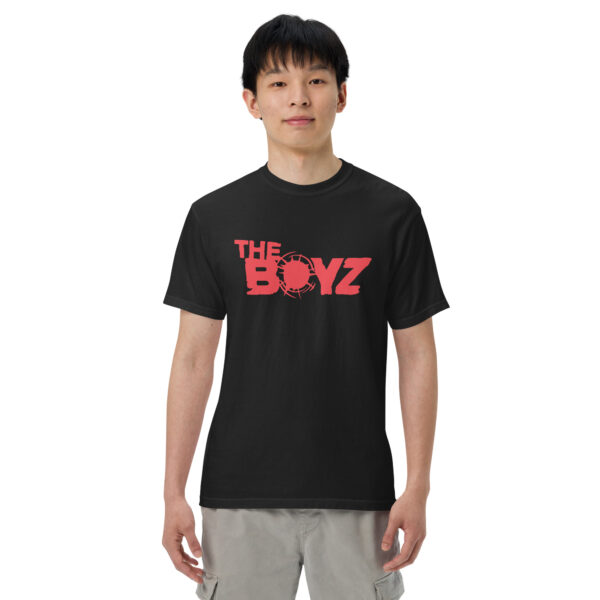Cotton is one of the primary materials used to produce the modern T-shirt, a staple in wardrobes worldwide. Understanding its journey from raw fiber to finished garment reveals the intricate process of textile production.This article explores the amount of cotton required to make a single T-shirt, covering each step from cultivation to the final product.
Table of Contents
ToggleThe Cotton T-Shirt: A Global Staple

Before diving into the specifics of cotton usage, it’s essential to understand the prominence of the T-shirt in global fashion. T-shirts are universally loved for their comfort, versatility, and affordability. They come in various styles, including bare crew necks, V-necks, polo shirts, and graphic tees, making them suitable for almost any occasion.
The Global Popularity Of Cotton T-Shirts
Before diving into cotton consumption, it’s important to recognize why T-shirts are a fashion essential.
T-shirts are usually known for their comfort, versatility, and affordability, and come in various styles, crew necks, V-necks, polo shirts, and graphic tees, making them suitable for different occasions.
From Cotton Field To Fabric: The Production Process

1. Cultivation: Growing Cotton in Warm Regions
Cotton is cultivated in warm climates with the right combination of sunlight, water, and soil fertility. Major cotton-producing countries include China, India, the United States, and Brazil, where vast cotton fields stretch across agricultural regions.
Ideal Conditions For Cotton Growth:
- Warm Climate – Cotton thrives in temperatures between 60-95°F (15-35°C).
- Ample Water Supply – Cotton plants require a significant amount of water, often sourced through rainfall or irrigation.
- Fertile Soil – Rich, well-drained soil with high organic content promotes healthy growth.
Growth Cycle:
- Cotton plants are typically planted in the spring and take 5-6 months to reach full maturity.
- The plant develops green buds, flowers, and cotton bolls, which contain the valuable cotton fibers.
2. Harvesting: Collecting Mature Cotton Bolls
Once cotton plants mature, the fluffy white cotton fibers inside the bolls are ready for harvest.
Harvesting Methods:
- Hand-Picking – In some regions, cotton is still harvested by hand, which helps preserve the quality of the fiber but is labor-intensive.
- Mechanical Harvesting – In large-scale farms, machines called cotton pickers and cotton strippers efficiently remove cotton from plants.
Challenges in Harvesting:
- Weather Sensitivity – Rain at the wrong time can reduce fiber quality.
- Defoliation – In commercial farming, chemicals may be used to remove leaves before harvesting to ensure cleaner cotton.
3. Ginning – Separating Cotton Fibers From Seeds

After harvesting, raw cotton undergoes ginning, a process that separates the cotton fibers (lint) from the seeds, leaves, and other plant debris.
How Ginning Works:
- The cotton is fed into a cotton gin, a machine invented by Eli Whitney in 1793.
- Rotating saw blades or rollers pull the fibers away from the seeds.
- The cleaned fibers (lint) are collected, while the leftover seeds are used for cottonseed oil or replanting.
Why Ginning is Important:
- Increases fiber purity.
- Prepares cotton for the spinning process.
- Maximizes efficiency in textile production.
4. Spinning: Turning Cotton Fibers into Yarn
Once ginned, the cotton fibers go through spinning, a process that transforms them into threads and yarns suitable for textile production.
Steps in Spinning:
- Carding: The fibers are brushed and aligned to remove tangles and impurities.
- Drawing: The fibers are stretched and blended for consistency.
- Spinning: The strands are twisted into strong cotton yarns that can be woven or knitted.Roving: The fibers are twisted slightly to create a thin, continuous strand.
Modern spinning machines can process thousands of pounds of cotton per day!
5. Knitting Or Weaving: Converting Yarn Into Fabric
Once the cotton is spun into yarn, it is transformed into fabric through knitting or weaving.
Knitted Fabric (Common for T-Shirts):
- Created by looping yarn in an interlocking pattern.
- Soft, stretchy, and breathable, making it perfect for T-shirts.
Woven Fabric (Less Common for T-Shirts):
- Made by interlacing yarns at right angles.
- Stronger and less stretchy, often used in denim or dress shirts.
Why T-Shirts Use Knitted Fabric:
- Better elasticity and comfort.
- Allows for a relaxed fit.
- Absorbs dye well, making it suitable for colored and graphic tees.
6. Dyeing And Finishing: Preparing Fabric For T-Shirts

Before the fabric is cut and sewn into T-shirts, it undergoes dyeing and finishing to achieve the desired color, texture, and durability.
Dyeing Process:
- Fabric is soaked in dye baths with chemical or natural pigments.
- Some T-shirts are pre-dyed, while others are dyed after being cut and sewn (garment-dyeing).
How Much Cotton Is Needed For A T-Shirt?
The amount of cotton required depends on the T-shirt’s weight, size, and style. However, a general estimate is:
A standard T-shirt requires approximately 10-11 ounces (283-312 grams) of cotton.
Breaking Down Cotton Usage:
- Fabric Weight: Most T-shirts use medium-weight fabric, around 5-6 ounces per square yard. A single T-shirt may require about 1.5-2 square yards of fabric.
- Fiber Loss: During ginning and spinning, some cotton is lost. On average, 2.2 pounds of raw cotton produce 1 pound of yarn.
Thus, for a 5-6 ounce T-shirt, around 10-11 ounces of raw cotton are required.
Factors That Influence Cotton Usage
Several factors affect how much cotton is needed per T-shirt:
Fabric Weight – Heavier T-shirts need more cotton, while lightweight summer tees use less.
Size & Fit – Larger sizes (e.g., XXL) require more fabric than smaller sizes.
Style & Features – Additional elements like pockets, thicker collars, or oversized designs increase fabric usage.
Production Efficiency – Modern manufacturing minimizes waste, but some material is lost during cutting and sewing.
Environmental Impact Of Cotton T-Shirt Production
Cotton cultivation and garment manufacturing have notable environmental effects:
Water Consumption – Producing enough cotton for one T-shirt requires approximately 2,700 liters (713 gallons) of water.
Pesticides & Chemicals – Conventional cotton farming relies on pesticides and fertilizers, which can harm ecosystems.
Carbon Footprint – Energy-intensive farming, production, and transportation contribute to emissions. Sustainable alternatives aim to reduce this impact.
Sustainable Alternatives To Traditional Cotton
With increased awareness of environmental concerns, many brands are adopting eco-friendly practices:
Organic Cotton – Grown without synthetic pesticides or fertilizers, organic cotton reduces environmental harm and often requires less water.
Recycled Cotton – Repurposing cotton fibers from old garments reduces waste and the demand for raw materials.
Blended Fabrics – Combining cotton with sustainable fibers like hemp, bamboo, or recycled polyester reduces overall environmental impact.
The Future Of Cotton And Sustainable Fashion
The process of making a T-shirt is complex and resource-intensive. On average, it takes about 10-11 ounces of cotton to produce one T-shirt, but this varies depending on weight, size, and style.
By understanding the cotton requirements and environmental impact of T-shirt production, consumers can make more informed choices. As the fashion industry shifts toward sustainability, materials like organic cotton and recycled fibers will play a key role in reducing environmental harm.
Interested in custom apparel? Consider choosing sustainable cotton for your next order! Our team is here to guide you through every step.
Conclusion
The journey of a cotton T-shirt, from its origins in the cotton fields to becoming a finished garment, is a complex yet fascinating process.
It involves multiple stages, including cultivation, harvesting, ginning, spinning, knitting, dyeing, and finishing, all of which contribute to the final product’s quality, comfort, and durability.
Understanding this process not only highlights the craftsmanship behind everyday apparel but also emphasizes the environmental impact of cotton production and the importance of choosing sustainable alternatives like organic cotton and recycled fibers.
As consumers, making informed choices about fabric and production methods can help support a more sustainable fashion industry while ensuring high-quality, long-lasting clothing.
FAQs: Understanding The Cotton T-Shirt Production Process
Q1: How much cotton is needed to make a T-shirt?
A standard cotton T-shirt requires approximately 10-11 ounces (283-312 grams) of raw cotton, depending on factors like fabric weight, size, and style. Larger or heavyweight T-shirts require more cotton compared to lightweight options.
Q2: What are the main steps in turning cotton into a T-shirt?
The process includes several key stages:
- Cultivation – Cotton is grown in warm regions like China, India, the U.S., and Brazil.
- Harvesting – Cotton bolls are picked by hand or machine.
- Ginning – Separates cotton fibers from seeds and impurities.
- Spinning – Fibers are twisted into yarn.
- Knitting or Weaving – Yarn is turned into fabric (T-shirts are usually knitted).
- Dyeing and Finishing – Fabric is dyed, treated, and prepared for cutting and sewing.
Q3: Why is cotton the preferred fabric for T-shirts?
Cotton is widely used for T-shirts because it is soft, breathable, durable, and moisture-absorbent. It provides comfort for daily wear and is versatile enough for different styles, including casual tees, polo shirts, and graphic T-shirts.
Q4: What is the difference between organic and conventional cotton?
Organic cotton is grown without synthetic pesticides and fertilizers, using sustainable farming methods that reduce water consumption and environmental impact. Conventional cotton, on the other hand, often relies on chemical inputs and requires more water. Choosing organic cotton can help support eco-friendly fashion.
Q5: How does T-shirt fabric affect durability?
The fabric weight, knitting technique, and fiber quality all impact durability. Heavier fabrics (6+ ounces per square yard) last longer and hold their shape better, while lighter fabrics (4-5 ounces per square yard) offer breathability but may wear out faster.
Q6: What are the environmental impacts of cotton T-shirt production?
Cotton cultivation and T-shirt manufacturing contribute to high water consumption, pesticide use, and carbon emissions. Producing one T-shirt can require over 2,700 liters of water. Sustainable options like organic cotton, recycled fabrics, and water-efficient dyeing techniques can help reduce environmental harm.
Q7:How can I make my cotton T-shirts last longer?
To extend the lifespan of your T-shirts:
- Wash in cold water to prevent shrinkage and fading.
- Use mild detergents to protect fibers.
- Air dry or tumble dry on low heat to avoid fabric damage.
- Store properly to maintain shape and texture.
Q8: Are there alternatives to 100% cotton T-shirts?
Yes! Many brands blend cotton with bamboo, hemp, recycled polyester, or modal to enhance durability, softness, and sustainability. These blended fabrics often offer better moisture-wicking, wrinkle resistance, and reduced environmental impact.
Q9: Where can I buy high-quality sustainable cotton T-shirts?
You can find sustainable cotton T-shirts from eco-friendly brands, ethical fashion retailers, and custom print-on-demand platforms that focus on organic, recycled, or responsibly sourced fabrics. Look for certifications like GOTS (Global Organic Textile Standard) and OEKO-TEX for verified sustainability.




















